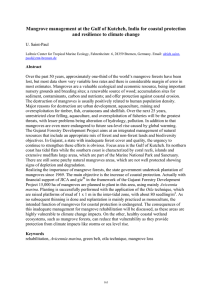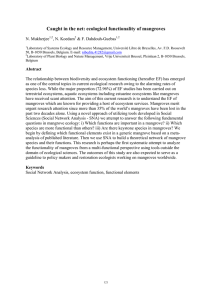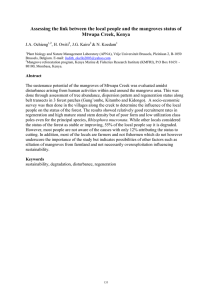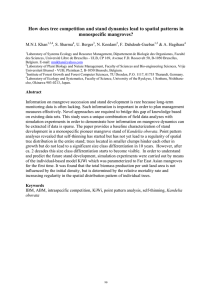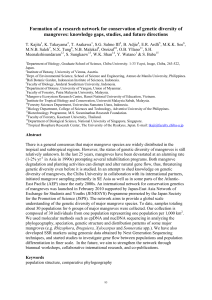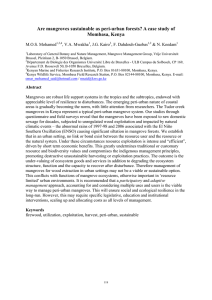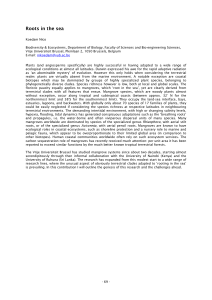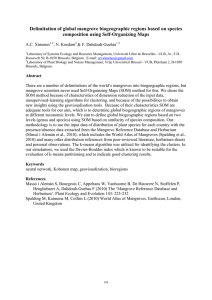Van Nedervelde Fleur , Uta Berger , Stefano Cannicci
advertisement
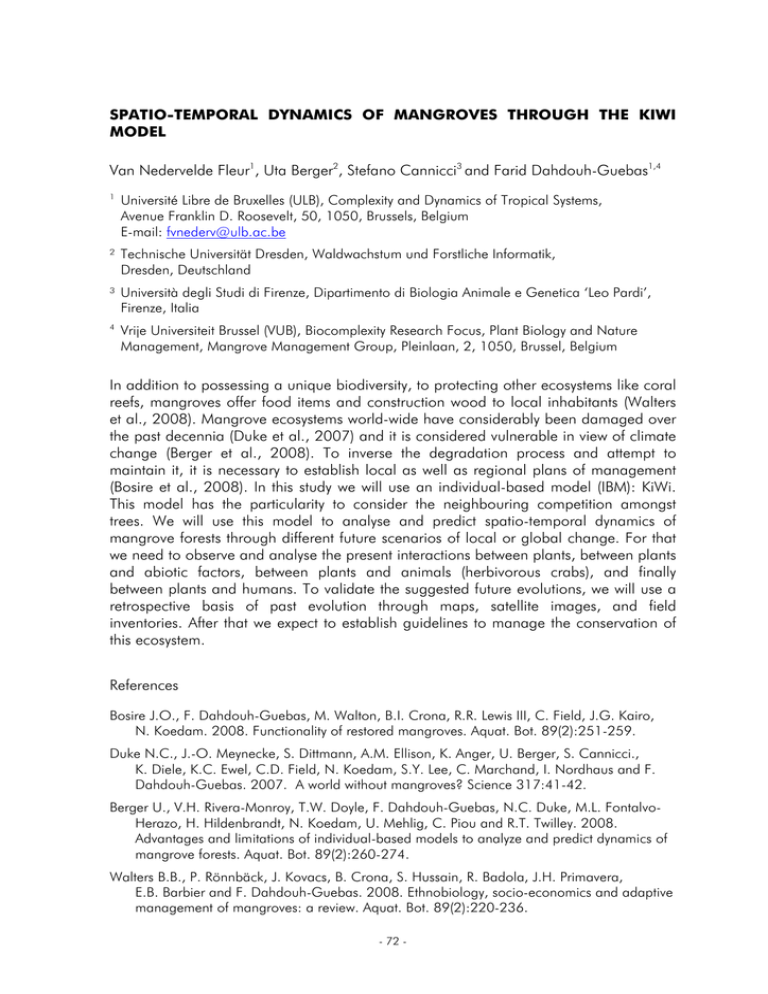
SPATIO-TEMPORAL DYNAMICS OF MANGROVES THROUGH THE KIWI MODEL Van Nedervelde Fleur1, Uta Berger2, Stefano Cannicci3 and Farid Dahdouh-Guebas1,4 1 Université Libre de Bruxelles (ULB), Complexity and Dynamics of Tropical Systems, Avenue Franklin D. Roosevelt, 50, 1050, Brussels, Belgium E-mail: fvnederv@ulb.ac.be ² Technische Universität Dresden, Waldwachstum und Forstliche Informatik, Dresden, Deutschland ³ Università degli Studi di Firenze, Dipartimento di Biologia Animale e Genetica ‘Leo Pardi’, Firenze, Italia 4 Vrije Universiteit Brussel (VUB), Biocomplexity Research Focus, Plant Biology and Nature Management, Mangrove Management Group, Pleinlaan, 2, 1050, Brussel, Belgium In addition to possessing a unique biodiversity, to protecting other ecosystems like coral reefs, mangroves offer food items and construction wood to local inhabitants (Walters et al., 2008). Mangrove ecosystems world-wide have considerably been damaged over the past decennia (Duke et al., 2007) and it is considered vulnerable in view of climate change (Berger et al., 2008). To inverse the degradation process and attempt to maintain it, it is necessary to establish local as well as regional plans of management (Bosire et al., 2008). In this study we will use an individual-based model (IBM): KiWi. This model has the particularity to consider the neighbouring competition amongst trees. We will use this model to analyse and predict spatio-temporal dynamics of mangrove forests through different future scenarios of local or global change. For that we need to observe and analyse the present interactions between plants, between plants and abiotic factors, between plants and animals (herbivorous crabs), and finally between plants and humans. To validate the suggested future evolutions, we will use a retrospective basis of past evolution through maps, satellite images, and field inventories. After that we expect to establish guidelines to manage the conservation of this ecosystem. References Bosire J.O., F. Dahdouh-Guebas, M. Walton, B.I. Crona, R.R. Lewis III, C. Field, J.G. Kairo, N. Koedam. 2008. Functionality of restored mangroves. Aquat. Bot. 89(2):251-259. Duke N.C., J.-O. Meynecke, S. Dittmann, A.M. Ellison, K. Anger, U. Berger, S. Cannicci., K. Diele, K.C. Ewel, C.D. Field, N. Koedam, S.Y. Lee, C. Marchand, I. Nordhaus and F. Dahdouh-Guebas. 2007. A world without mangroves? Science 317:41-42. Berger U., V.H. Rivera-Monroy, T.W. Doyle, F. Dahdouh-Guebas, N.C. Duke, M.L. FontalvoHerazo, H. Hildenbrandt, N. Koedam, U. Mehlig, C. Piou and R.T. Twilley. 2008. Advantages and limitations of individual-based models to analyze and predict dynamics of mangrove forests. Aquat. Bot. 89(2):260-274. Walters B.B., P. Rönnbäck, J. Kovacs, B. Crona, S. Hussain, R. Badola, J.H. Primavera, E.B. Barbier and F. Dahdouh-Guebas. 2008. Ethnobiology, socio-economics and adaptive management of mangroves: a review. Aquat. Bot. 89(2):220-236. - 72 -


